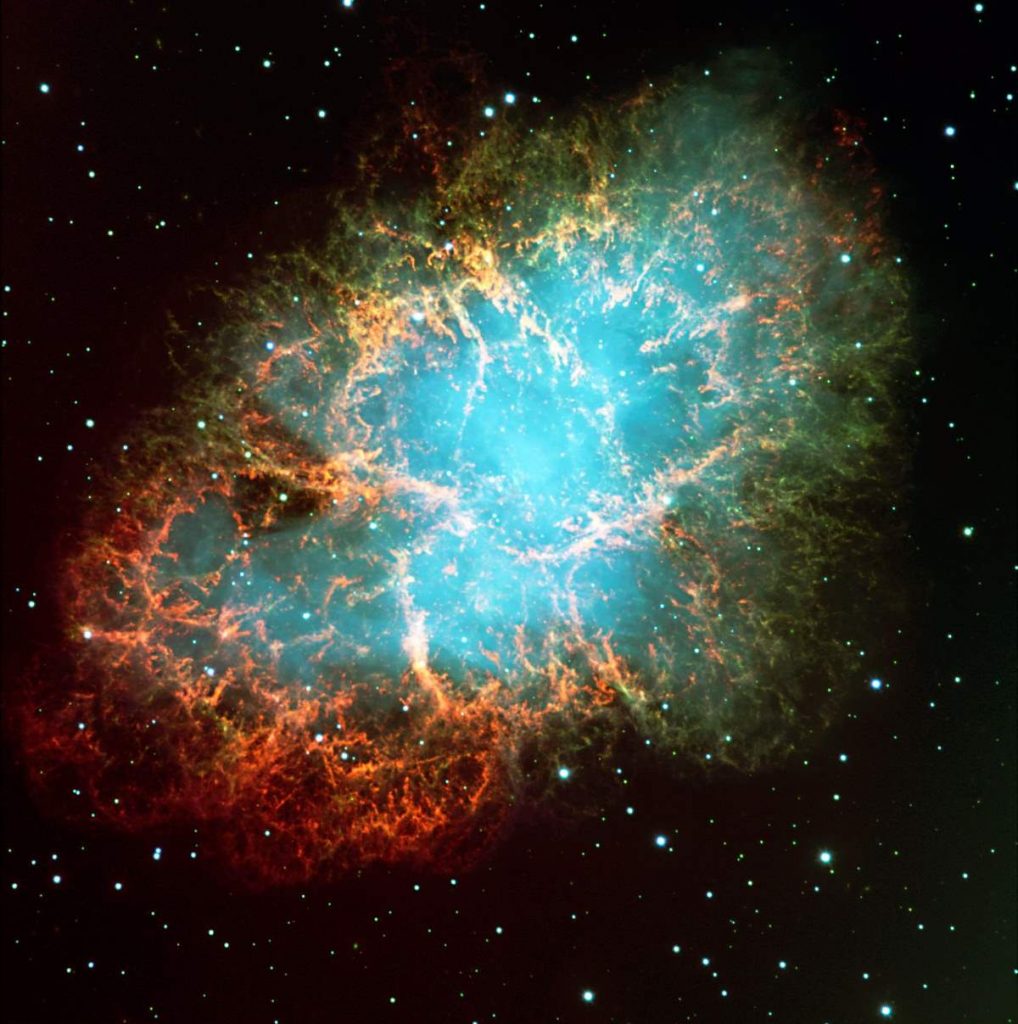On September 20, 2016, Argentinian amateur astronomer Victor Buso was testing his camera-telescope setup. He pointed his Newtonian telescope at NGC613, a barred spiral galaxy located some 67 million light-years away in the southern constellation of Sculptor. Then he started taking a series of short-exposure photographs. To ensure his new camera was functioning properly, he examined the images right away. While doing that, he noticed something very interesting: a previously invisible point of light near the end of a spiral arm of the galaxy: a newborn supernova – an elusive event that nobody had ever captured before.
A newborn supernova
Buso then informed astronomers at the Astrophysics Institute of La Plata, just outside Buenos Aires, and give his recorded data to them. The institute fielded an international team led by astronomer Melina Bersten, and the researchers began studying the light source with more powerful telescopes, both on the ground and in space.

The astronomers reported their findings on Wednesday 21, 2018 in Nature, in an article titled “A surge of light at the birth of a supernova”. They announced that “Here we report the serendipitous discovery of a newly born, normal type IIb supernova (see notes 1) (SN 2016gkg)”.
The astronomers also said that the original star had probably been about 20 times as massive as the Sun, but had blown most of that mass off into space before the decisive explosion began, and probably harbored about five solar masses when it exploded.
Study co-author Alex Filippenko, an astronomer at the University of California, Berkeley has said that “It [spotting the birth of a supernova] is like winning the lottery … Professional astronomers have long been searching for such an event. Observations of stars in the first moments they begin exploding provide information that cannot be directly obtained in any other way.”.
Researchers say “Buso had bucked odds of 1 in 10 million, or perhaps even 1 in 100 million”.
Buso not only spotted a newborn supernova. He also presented evidence for the “long-sought shock-breakout phase”. Most supernovas are far away and don’t call attention to themselves until their funeral pyre explosions are well underway. In this case, astronomers were able to record what they call the “breakout,” when a shock wave radiating from a star’s core, which has probably collapsed into a black hole, reaches the surface of the dying star and brightens it catastrophically.

Notes
- A Type II supernova results from the rapid collapse and violent explosion of a massive star. A star must have at least 8 times, but no more than 40 to 50 times, the mass of the Sun (M☉) to undergo this type of explosion. Type II supernovae are distinguished from other types of supernovae by the presence of hydrogen in their spectra. They are usually observed in the spiral arms of galaxies, like in this case, and in H II regions, but not in elliptical galaxies.
Sources
- “Amateur Astronomer Spots Supernova Right as It Begins” on Gizmodo
- “Amateur astronomer gets 1-in-10-million shot of supernova’s first light” on Astronomy.com
- “Amateur Astronomer Wins ‘Cosmic Lottery’ with 1-in-10-Million Supernova Shot” on Space.com
- NGC613 on Wikipedia
- Type II supernova on Wikipedia
- “He Took a Picture of a Supernova While Setting Up His New Camera” on New York Times
- “A surge of light at the birth of a supernova” on Nature.com
- Budget of NASA, Year by Year [1980-1989] - June 10, 2024
- Budget of NASA, Year by Year [1970-1979] - June 10, 2024
- Budget of NASA, Year by Year [1958-2024] - June 10, 2024


